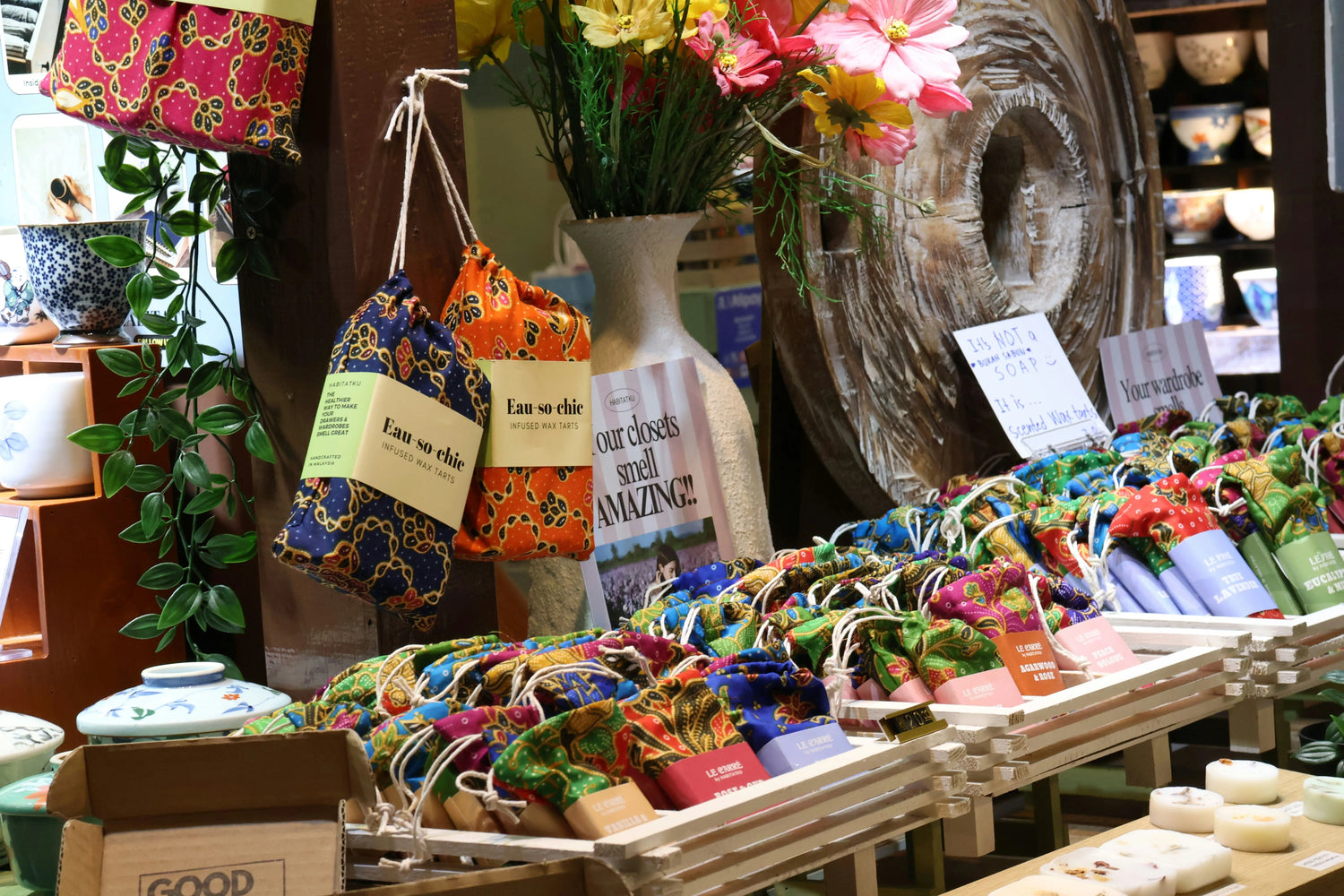Japan is a beautiful country to visit, but what I love about every trip to this exciting country is bringing back souvenirs from Japan. The colorful snacks and delicate ceramics are my favorite to add to my return trip. The soft fabrics and fun trinkets tell another story. But squeezing them into a stuffed suitcase without breaking or making a mess? This was always a tricky thing for me. I couldn't afford a new suitcase or leave my souvenirs behind. So, what could help me are compression bags for suitcases. They made extra room in my suitcase for other stuff and to protect my things. Here’s how I did it and how you can too.
Why I Chose Compression Bags for Packing My Souvenirs
I always asked people about packing storage on trips, the related challenges, and the solutions. Even my internet understands my craze towards traveling and packing, and of course, souvenirs from destination places.
I have read about packing cubes and compression bags for space-saving in travel blogs. They seem similar to me, but they are not. Here’s the main difference.
- Packing cubes and regular packing bags help you organize things without reducing volume.
- Compression packing bags force out air and shrink contents. Some use manual roll methods, others use vacuum pump systems.
- In the guides I read, compression cubes are preferred when you want to reduce bulk, while packing cubes are good for organizing layers.
- Also, some users warn that compressing soft things too much can ruin fluff or cause wrinkles.
I needed something that could both shrink and protect. That led me to the VacBird vacuum storage bags, which offered a strong material and good seal reliability. The best helping companion is the VacBird Jumbo series of vacuum storage bags.
Their jumbo bags use durable, tear-resistant PA + PE materials that resist water or dust. Vacbird gave me confidence that I wouldn’t accidentally tear a bag and ruin my souvenirs.
Planning My Souvenir Strategy Before the Trip
The souvenir strategy is a bit of a new thing for many. It’s a nice strategy when you have knowledge of what you can bring from your upcoming trip.
1. Estimate what I’d bring back
I made a complete list of items:
- A few tees
- A yukata scarf
- Ten small snack boxes
- Three ceramic bowls
- Some postcard
- Some prints
I knew soft items and snacks could compress, but ceramics and prints I’d need to protect.
2. Leave suitcase space for souvenirs
Going with a suitcase in which vacuum storage bags compressed your clothes will give you an advantage in getting some empty slots for souvenirs from the destination places on the return.
3. Carry cushioning materials
I brought bubble wrap, soft clothes to wrap fragile items, and some small pouches.
4. Choose the right compression gear
I bought durable jumbo vacuum compression bags from VacBird that have a large capacity and are reusable. I decided which sizes might work best for clothes or blankets. I didn’t overbuy too many sizes, focusing on a couple of large ones.
How I Packed My Souvenirs Step by Step
You might have your own method, but here is the one I have found the most helpful.
Sorting & cushioning first
I sorted souvenirs into groups:
-
Soft items
⁜ Clothes
⁜ Scarves
⁜ Towels - Snacks or packaged goods
-
Fragile items
⁜ Ceramics
⁜ Glass
⁜ Prints
I wrapped the fragile goods in bubble wrap or soft cloths, then placed them in the corners of my suitcase. That way, they wouldn’t rub against hard edges.
Compressing soft items
Here’s how I treated my clothes or soft things:
- Fold or roll items neatly, matching similar weights together, like all T-shirts
- Place into a VacBird jumbo vacuum bag, leaving some headroom. Overfill will be dangerous.
- Seal the bag carefully by running the clip to confirm full closure.
- Use the vacuum pump to remove air until the bag is tight.
- Check edges for leaks or bubbles. If a spot seems loose, reopen and reseal that section.
Because VacBird uses thick material, I felt safer compressing more aggressively without fearing a tear or a leak.
Placing things in the suitcase
I used the compressed bags as buffer zones:
- I placed one compressed bag along the wall of the suitcase as a shield.
- I used the compressed bundle’s flatter shape to fill in gaps around the fragile items.
- I put those delicate things in the more rigid core and surrounded them with compressed fabric.
- Snacks and boxed goods went in the middle. Clothes offer a cushioning effect for protection from damage.
This layering meant nothing shifted during transport, and pressure from other bags didn’t crush delicate items.
Mid-trip souvenir additions
I shopped on my trip every day and added the souvenir to my suitcases mid-trip.
- I always carry an extra, half-empty vacuum bag ready.
- When I bought something, I put it in the spare bag, resealed it, then rearranged it within the suitcase.
- Occasionally, I need to re-compress an earlier bag to make room.
One tip I picked up from travel forums: if a compression bag starts losing suction, reseal it, press out residual air, or shift a bit to relieve strain.
Unpacking at home
Unpacking is also an art if you want to keep your items safe. On arrival:
- I only open or unseal the bag when I need it. Nothing moved in transit.
- I always open the bag slowly to avoid sudden expansion, putting pressure on fragile items.
- Before clothes, I pull out my fragile souvenirs. Compressed clothes are the next items, or maybe the last ones.
My Experience with VacBird Jumbo Compression Bags
I chose the VacBird Jumbo series compression bags for my trip to Japan. Big in size, these bags help me pack easily and protect my items and clothes. They keep them clean and take less space in my suitcase, which altogether gives me organized packing and stress free traveling. Here's what I liked about these jumbo vacuum storage bags, and some tips and valuable lessons from my side.
What I liked
- The jumbo size let me pack bulky sweaters and extra layers along with souvenirs.
- The material of the bag is sturdy. I never experienced a tear or puncture during my previous trips.
- The seal stayed strong. I tested after some days in transit, and it resulted in no leaks.
- The transparency allowed me to see what was inside without opening it.
- Reusing these bags is possible, and the durable nature of these bags makes them a good choice for a number of foreign trips.
Tips & lessons
- Overfilling bags is not a good decision. Leave a little headspace so the seal can close cleanly.
- Avoid packing very sharp or rigid items directly adjacent to the bag edges.
- If you feel a part of the seal loose, open and press air out by hand, then reseal that section.
- Use the compressed bags as both volume savers and protective wraps.
Common Problems & How to Handle Them
|
Problem |
Why It Happens |
Solution or Prevention |
|
Zipper or seal fails |
|
|
|
Wrinkles in clothes |
Excessive compression |
Compress gently for delicate fabrics, or skip compressing those items |
|
Air leaks mid-transit |
|
|
|
Overweight luggage |
You add more than allowed |
Weigh your bag before checking in and trim earlier |
|
Rigid compressed bags’ awkward shape |
The bag becomes stiff |
Use multiple smaller bags rather than one big one VacBird jumbo series vacuum storage bags have 4 different sizes. |
Some Extra Hacks That Make My Compression Bags Work Better
- Pairing compression bags with packing cubes is a good choice. Cubes are a good option for organization. You can easily slide them into compression sleeves.
- Use socks and scarves type soft items to fill tiny gaps.
- Carry a small repair kit, including tape and a mini patch.
- Compress only on the return leg. Leave things loosely packed at the start and compress when returning.
- Label your compressed bags by adding or sticking a chit with the specific clothing type, like shirts and pants, so you know what’s inside.
My Paris-to-Japan Return Load
Imagine I bought:
- 3 sweaters
- 5 T-shirts
- 6 snack boxes
- 2 ceramic teacups
Here’s how I’d distribute:
- Wrap teacups with clothes and place them in the shoe corner.
- 3 sweaters + 2 shirts → one jumbo compression bag.
- The remaining 3 T-shirts are good to add to a smaller compression bag or cube.
- Snack boxes in the center, cushioned by compressed clothing.
- Use leftover space for socks, prints, etc.
After compression, I’d reduce that sweater bag to about 30–40% of its original volume, giving me enough room to fit the rest without bulging or pressure.
FAQs
Can you use compression bags in checked luggage?
Absolutely, you can safely use compression bags in checked luggage. I’ve done it many times and found the best decision to use them on my Japan trip. The bags protect the items and compress them well, which means no shifting during transit happens. But checking the seal is fully closed is your duty before you check in your suitcase. Also, don’t pack anything fragile inside the compressed bag itself, and keep breakable items cushioned by softer ones around it.
Do compression travel bags actually work?
Yes, compression travel bags really do work. They push out extra air and shrink soft items like clothes, towels, and bedding to save a lot of space. The trick is not to overfill them and to check the seal before use. VacBird compression bags for clothes worked great in my experience. They kept air out, saved room, and made packing much easier. Just remember, they don’t make your bag lighter, only smaller.
What are the best compression packing bags for travel?
There are many options out there, but for reliability and durability, I recommend the VacBird Jumbo Series compression bags. They have a thick, leak-resistant material, are easy to seal, and are available in four different sizes that fit perfectly in most suitcases. These compression packing bags for travel are reusable and keep your clothes neat and clean. I used them for both regular clothes and soft souvenirs, and they worked perfectly every time.
Conclusion
Bringing home souvenirs from Japan felt less stressful thanks to compression bags for suitcases. That extra flexibility allowed me to squeeze in those souvenirs without worry. My fragile items survived, the soft goods stayed neat, and I stayed under weight limits.
If you try this, pick VacBird’s jumbo series like strong bags. Not good to overfill bags and layer items wisely. Do a test pack at home so you know how things will settle. Your next trip home can be full of memories without the suitcase disaster if you focus on care and smart packing.






Leave a comment
This site is protected by hCaptcha and the hCaptcha Privacy Policy and Terms of Service apply.